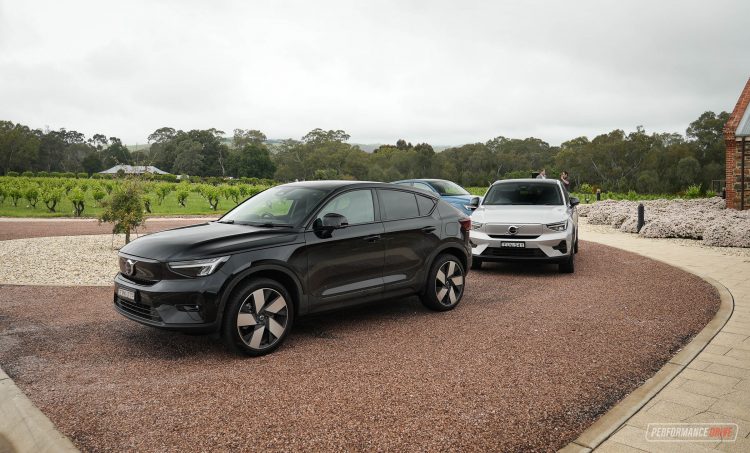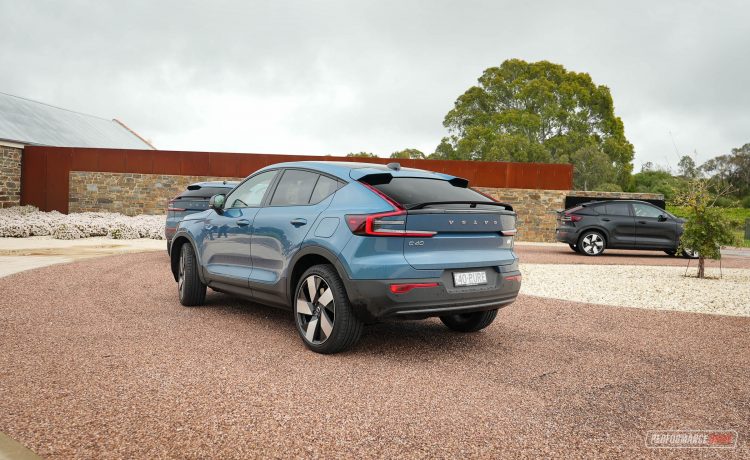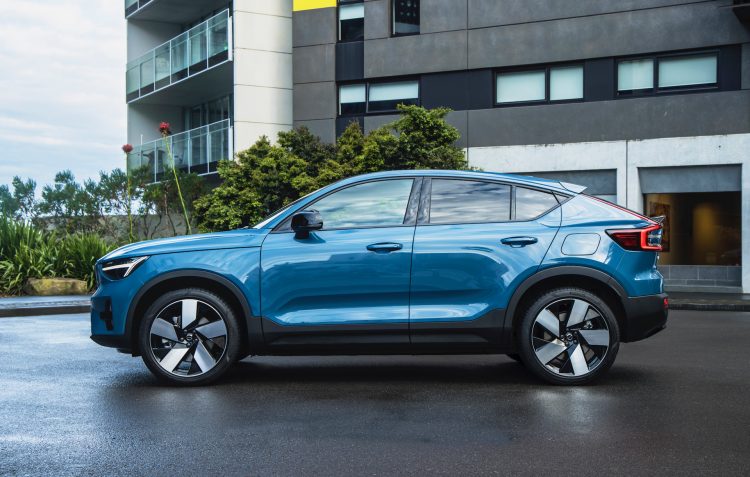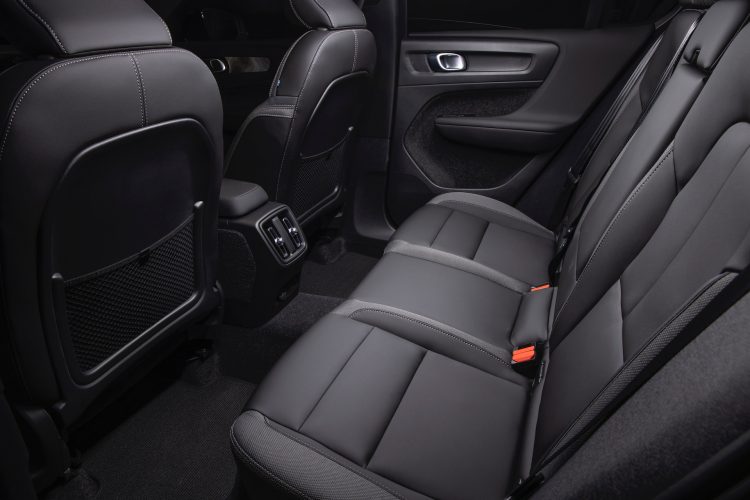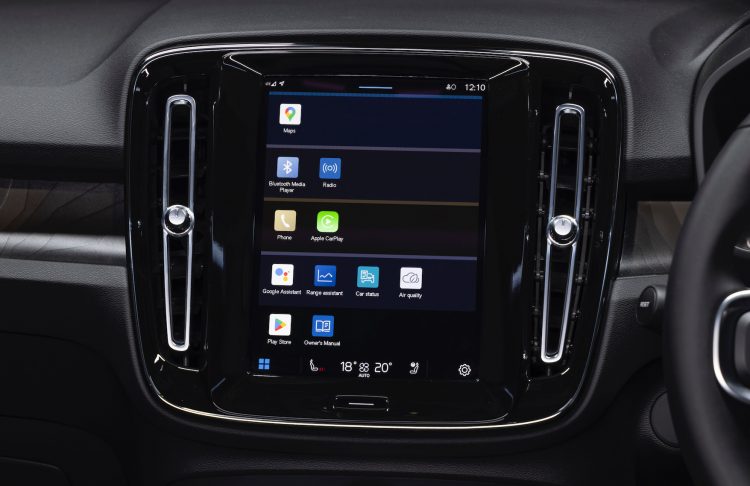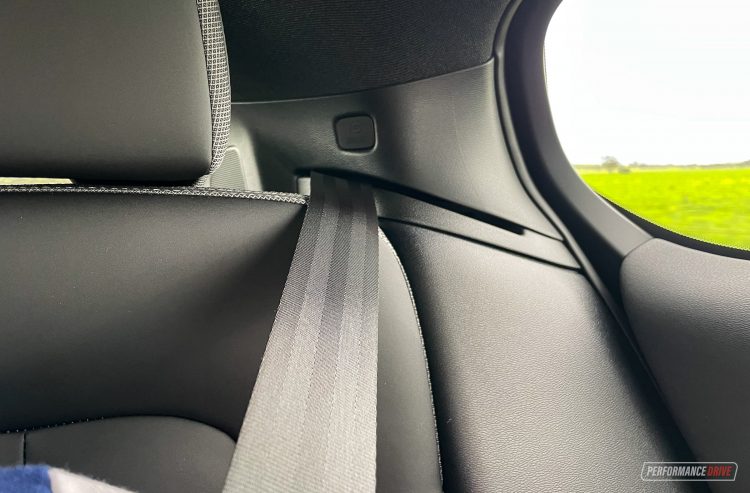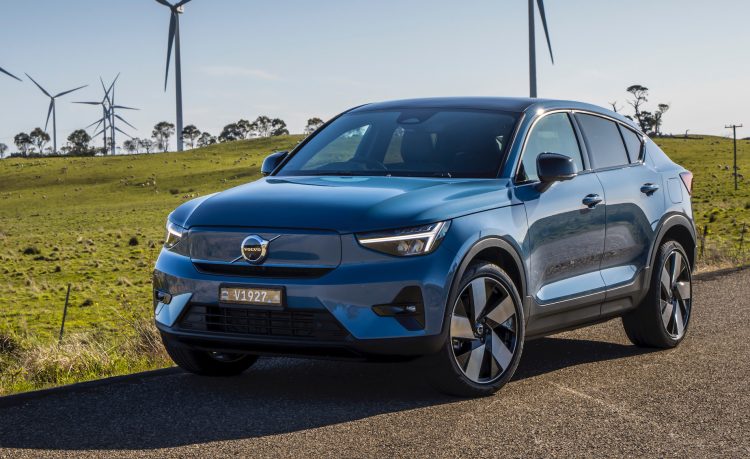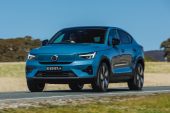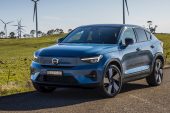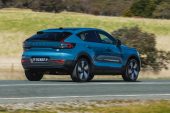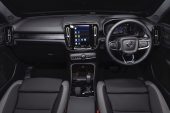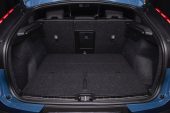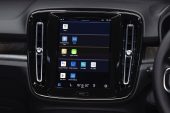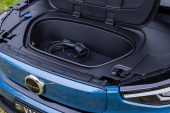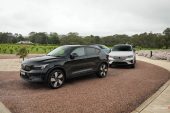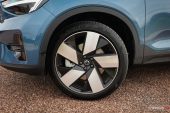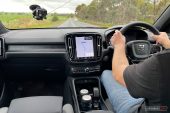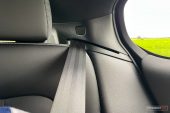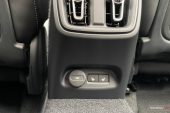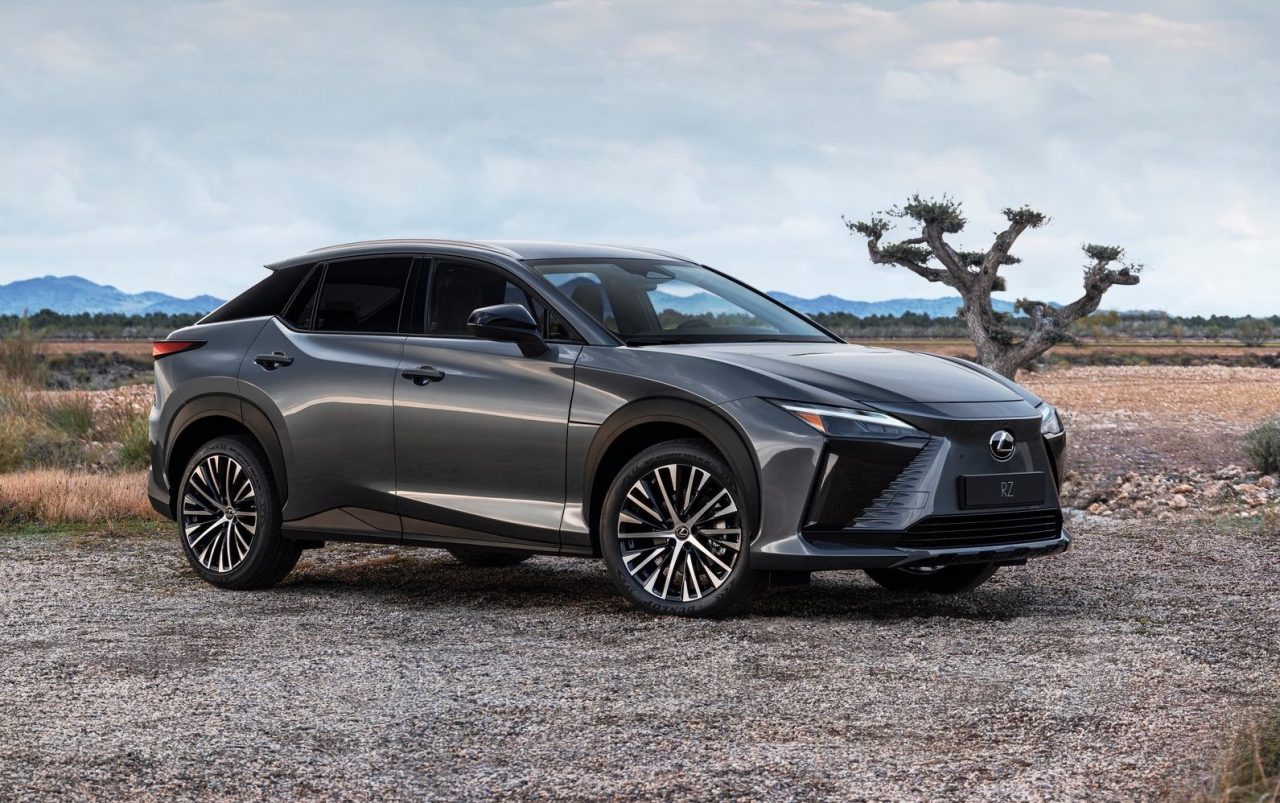Electric vehicles are rapidly becoming not only the trending purchase, but actually the norm in some market segments. Particularly the small-to-medium size SUV class. So much so that Volvo now offers two options in this category, with the XC40 Recharge and now the sporty sibling, the C40 Recharge.
Volvo hasn’t really been making a big deal about introducing electrified options, even though, right now, it is the only carmaker in Australia that features a complete fleet of only electrified models (aside from the dedicated EV brands). Every vehicle it sells, currently, features electrified powertrain technology, whether it be mild or full hybrid, plug-in hybrid, or full electric.
The C40 Recharge is only available as a fully electric model. It comes in single- and twin-motor forms (FWD and AWD), and it sits right next to the existing XC40 as a swoopy, coupe-like alternative.
For this review we’re at the official Australian media launch event, which took place in Adelaide’s beautiful Barossa Valley this week. We’re mainly concentrating on the AWD version because that’s what we drove. Prices start from $74,990 for the single motor (434km range), and from $82,490 for the twin motor, called Twin (420km range).
2023 Volvo C40 Recharge Twin – THE SPECS
Battery: 78kWh lithium-ion, 400V
Output: 300kW / 660Nm
Transmission: 1-speed auto
Drive type: All-wheel drive
0-100km/h (claimed): 4.7 seconds
Tare weight: 2154kg
Official range (WLTP): 420km
Starting price: $82,490
The C40 is based on the same platform as the XC40 Recharge and indeed the Polestar 2. In fact they all compete in the same segment. That is unusual but not completely out of the ordinary. Especially for hotly-contested segments. For example, Toyota offers three products in the large seven-seat SUV class (Prado, Kluger, Fortuner).
More importantly, the C40, despite being built in the same Chinese factory and sharing many parts with the Polestar 2, is not associated with the Polestar model in any way in terms of marketing. It’s a direct competitor. We think Volvo may loose some sales because of this given the Polestar 2 is slightly more affordable. Albeit with a less recognisable name and missing out on some standard features.
One area that stands out with the C40 is the suave Swedish design. It looks both sleek and intelligent, like a really cool wrist watch. There is no front grille because, being electric, it obviously doesn’t need one. But we like how Volvo has elegantly concealed the area. Some manufacturers really stuff this up in our opinion, trying too hard to make it look like a conventional, functioning grille. This is neat and tidy, and in sync with the rest of the atheistic philosophy.
At the back is where you’ll spot the biggest difference from the XC40. This features a fashionable fastback hatch lid, providing a coupe silhouette. We like the sculpted rear spoilers up near the roof, and the extended C-shape taillights which kind of hark back to the C30 days. It looks sporty, too, giving off an instant impression that it can accelerate as ferociously as a high-end sports car.
The interior is the main attraction in our view. It is certainly going to be one of the key reasons consumers make this a purchase. Firstly, the decor is very distinctive. It carries through the same smart yet polite character as the exterior, with simplicity and relaxation in high quantities. There are minimal buttons on the dash, only for the critical functions, with all other on-board controls housed within the sharp portrait-oriented touch-screen display.
The C40 is one of the first Volvo models to incorporate the company’s latest Android-based operating system, developed in partnership with Google. It is seamless in functionality, with crisp loading response and very clear graphics, including for the standard surround-view camera system.
Of course, it also features the complete Google Maps suite with satellite view, and ties in with Google Assistant and the Google Play Store. Volvo claims it is “one of the best infotainment systems on the market”. We wholeheartedly agree. We like the way it is not overfilled with apps and menus, but if you want to play around with core settings and so on, there are simple avenues to take to reach such functions.
Swipe across in either direction for the main pages, or hit the home button (one of only a few physical buttons) and you’re instantly brought back to a light stack of widgets for the main services. You can also pull down the screen from the top for the settings, including the drive modes and safety systems.
Passenger comfort is pleasant and roomy enough for this size vehicle. The seats are a little firm for our liking, with what seems like tightly-wrapped thin cushioning. It would be nice to see some thicker padding beneath, which would also help sink you in a bit and improve lateral support. The seats are very ergonomic though, helping to stabilise a proper posture.
Rear seat space is quite decent, despite the sloping roofline. I had no issue with head clearance in the back, for example, although I’m only about 170cm tall. Even still, I had about a hand-width of leftover space above my head. Legroom is even better, with nice flat foot boards and a good distance to the back of the front seat.
It’s a bit disappointing to see a driveline tunnel hump in the middle at the back, considering there is no tailshaft. But that’s there because the platform also has to accommodate conventional petrol models that use a drive shaft. Sharing is all in the name of cost efficiency. And that translates to the customer, too. Would you rather pay more for the hump to be removed and for a flat floor? Probably not, considering this isn’t pitched as a full-size SUV that’s primarily designed for carting around five adults anyway.
Another minor gripe we have is how the rear seat belts scratch and rub against a stitched nylon strip that runs across the top of the seat. Volvo may have placed this strip along the top on purpose for durability reasons, but the scratchy noise against the seat belt can get annoying. Especially on longer journeys. The glass roof could also do with an in-built sun shade as it is going to cook the cabin in the Aussie summer.
Boot space is reduced compared with the XC40 Recharge, as expected, with 413L here and 452L in the electric XC40. That’s due to the raked tailgate. It’s still a decent space and plenty enough for most buyers in this class. However, the main issue going with the sloped hatch lid is reduced rear visibility. Luckily the standard parking cameras provide a great view for reassurance.
Out on the road we had the chance to sample the C40 in the dashing Adelaide hills as well as on some open country roads and highways. Firstly, yes the power and torque are immense. We didn’t get a chance to test the 0-100km/h time but Volvo claims it in 4.7 seconds. It feels every bit as quick, with sudden and very forceful momentum heavily pushing you back into your seat. Honestly, you won’t be looking for more power if going with the Twin variant.
The traction around corners is outstanding, even in wet and greasy conditions. We applied full power from the apex on some turns, when it was safe to do so, and the thing just grips up and pulls hard, with no hesitation or slip. It was only when we put the car into an awkward situation did we notice the traction control light flicker momentarily. But that was purposely applying full power on a tight, uphill turn in the wet.
A lot of this composure and grip is thanks to the comprehensive suspension setup. We asked a Volvo representative about the specific tune compared with the XC40, and he said it is different, in terms of rates, but the fundamentals are the same. There’s a firm, rubberiness to the tune here, which is absorbent enough for sudden or one-off bumps and ruts. But, we found on continuous undulations it can be a bit bouncy. However, it always feels solid and secure on the tarmac, with all wheels firmly planted.
Speaking of which, the C40 Recharge Twin weighs in at 2154kg. That’s heavy for this size vehicle but relatively average for an electric vehicle. We feel like the weight does help with handling in some cases, as it is kind of like downforce from aerodynamics. And since you have all of that power and torque available instantly, there’s no stress about getting the weight of the car up to speed.
You can drive the C40 in a one-pedal fashion, using the regenerative braking as your main source of deceleration. This method does take some getting used to but it’s quite fun when you get the hang of it. Even during sporty driving, it’s almost like left-foot braking as the car slows the instant you slacken off the throttle. There’s an option to turn off the function as well if you don’t like it.
2023 Volvo C40 Recharge Twin – THE VERDICT
It’s great that Volvo Australia has been able to introduce both body styles and in fully electric form, with the XC40 and this C40. Most rivals are still running around trying to figure out the best timing for when to introduce their EVs to Australia. Some brands offer a few, but in the “SUV Small > $40K” category where this sits (according to VFACTS), there are currently only two other electric options; the Lexus UX 300e and Mercedes EQA SUV. Both available in one body style.
Although this is arguably a nicer-looking alternative to the electric XC40, it is $3000 more, so that’s something to consider. It’s not much and we guess the variance is in line with the industry standards for this kind of thing, and probably what most would expect to pay for additional flair and sportiness. The sacrifice in practicality is minimal, too.
